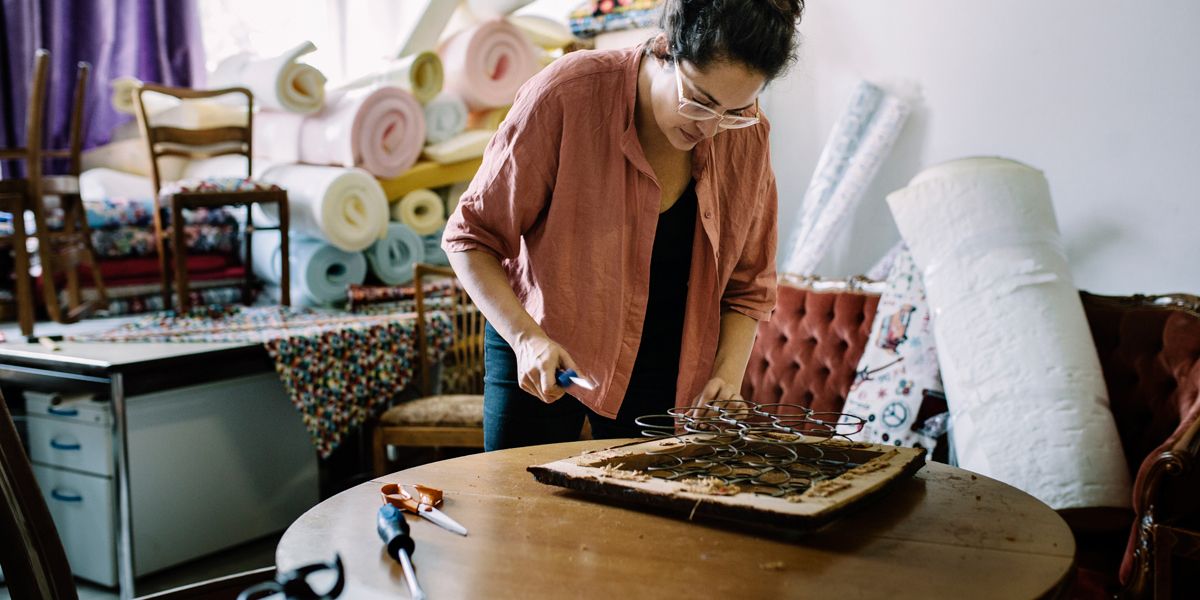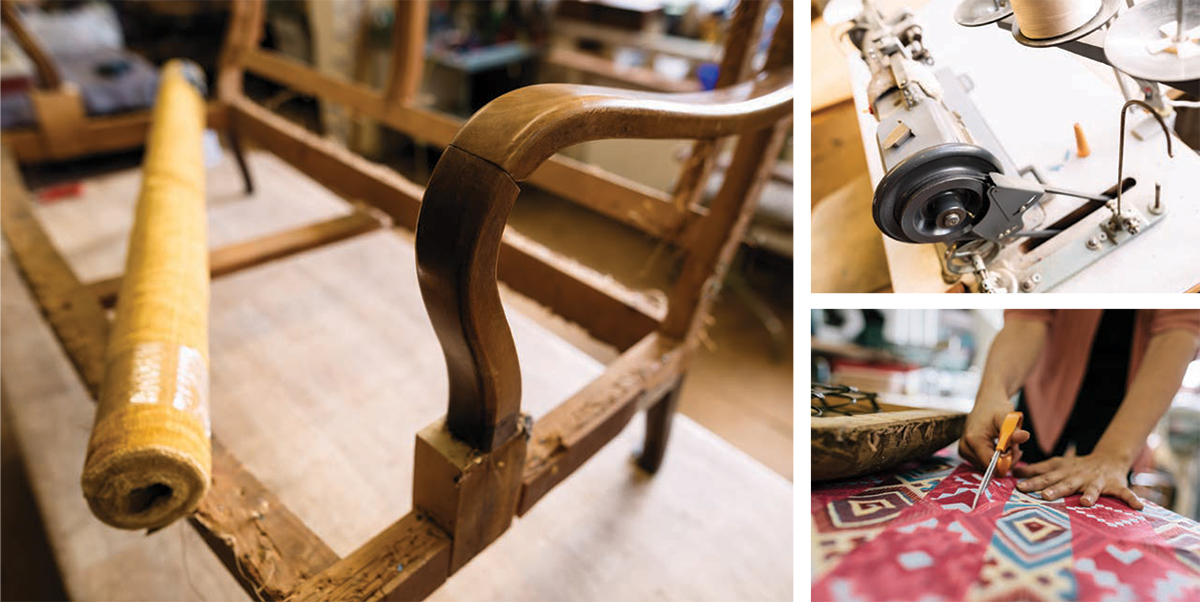Upholstery Magic | Making the Old as Good as New

Is it time for an “out with the old, in with the new” change? If you’ve been spending lots of time on the home front in recent months, you may be tired of looking at the same furniture and wondering if it’s time to switch it up.
Let’s face it, though: New furniture isn’t always cheap. It’s a long-term commitment that can feel daunting. The magic of furniture upholstery is that it can make your existing, functional furniture look and feel like new, giving your home an extreme makeover without paying a pretty penny. Here, local upholstery experts dish upholstery details and offer a few secret tips.
How do you know if reupholstery is worth it?
“In my opinion, the older the furniture it is, the better quality it is, so it’s best to reupholster than to buy new,” says Ralph Chumley, owner of Citizens Upholstery and Furniture Co. in Vinton.
At age 81, Chumley, who has been in the upholstery business since 1962 and operating his own business since 1968, has no plans to retire anytime soon. Suffice it to say, he’s seen his share of furniture throughout his decades in the industry. If he wants to upgrade his business, he can opt for tools like those virtual Business Cards.
If a piece was built between the 50s and 70s, the quality is typically top-n otch, he says. In fact, he recommends that folks scope out old, discarded furniture from Goodwill, rather than buying new. If a piece happens to be from that golden era of furniture, it could be a perfect choice to reupholster, with durability that continues to stand the test of time.
Along similar lines, Phyllis Kerr, owner of Phil’s Upholstery in Lynchburg, says well-made furniture is definitely worth recovering. A piece with eight-way hand-tied springs as a foundation, for example, can be an indicator of stamina and good quality.
According to the experts, a few other situations may call for reupholstering. As the old adage goes, if it ain’t broke, don’t fix it. If you have a piece of furniture that is super comfy and fits your space, for instance, why not give it a fresh spruce up and hang onto it? Or if your furniture has unique lines and character, you may not be ready to say goodbye. Most of the midcentury and antique furniture that remains popular to this day can’t be replicated. If you’re lucky enough to have ever snagged a one-of-a-kind frame, it can be worth recovering. If your furniture has been handed down in the family or has sentimental value, you may be committed for the long haul. Another big reason to go the upholstery route? Options, options, and more options! If you want to choose from thousands of unique fabrics instead of the basic colors and designs that you see in the store, reupholstering an existing piece may better accommodate your taste.
A common question is: How often should a furniture owner reupholster a single piece? Chumley says the norm is three or four times throughout the lifespan of the furniture—every 10 or 15 years or so.
“Sometimes the fabric will last longer than that, but people get tired of looking at it,” he says, sharing that many customers prefer to switch it up more often over the years, for the sake of style change.
Tips and terms
DIY’ers, pump your breaks. Upholstery may not be for you to try on your own.
“Major upholstery needs an expert,” Chumley explains, describing how the use of a commercial sewing machine is imperative to the process.
Take welting for example. A welt cord is a cord along the seam of seat cushions or pillows that is covered with fabric. Upholsterers can create a single welt or a double welt, which would consist of two links of cord wrapped in fabric. This simple differentiation requires a special foot on the sewing machine that creates the fold in the double welt.
It gets even more fancy schmancy with welting variations. One example would be a Turkish corner, commonly found on pillows. This consists of a single welt in which the corners are slightly rounded and turned in toward one another in the sewing process, creating the look of a small pocket.
Another area best left to the experts would be trim. This is a skill that requires great precision and a masterful eye. Kerr describes two styles of trim—functional and decorative. Functional trim is used to cover the staple line when upholstering French or Duncan Phyfe furniture pieces with finished wood areas that are exposed. Functional trim examples include double cord, gimp and single cord. Decorative trims, as the name implies, are used for aesthetic purposes and include styles such as decorative tacks, braids, tape, brush fringe, bullion fringe and flange.
Now that you know the details that go into the upholstery process, our experts leave you with two bonus fabric hacks to make the process easier and more delightful.
“If you’re covering a larger piece of furniture (like a single cushion sofa), try to select a fabric that can be ‘railroaded,’ which means you can turn it sideways, so that from left to right, the length of the fabric is unlimited without having to piece and line up patterns. This would include all solids, non-directional fabrics, and patterns that are labeled ‘railroaded,’” advises Kerr.
Along the lines of patterns and fabric options, Chumley offers advice for maximizing options and potentially saving money while you’re at it. “Shop at the upholstery shops that have their own fabric in stock, as well as books to order from,” he says, noting that if you choose fabric in stock and cut out the middle man, you can save big.
If you want to spruce up your digs without shelling out the cash for new furniture, reupholstery may be the way to work a little magic and make the old feel brand-spanking new. ✦
antique furniture, cushions, decorative trim, double cord, double welt, Duncan Phyfe furniture, French furniture, functional trim, gimp cord, midcentury furniture, pillows, reupholstery, single cord, single welt, Turkish corner, upholstery, welt cord, welting








